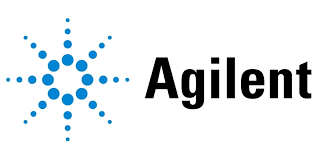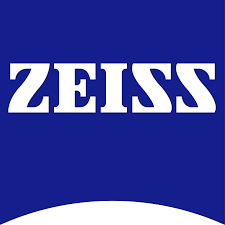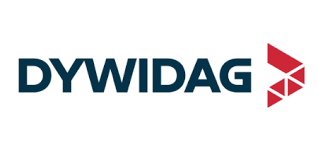Automated Suturing Devices Market Report
Published Date: 02 June 2025 | Report Code: automated-suturing-devices
Automated Suturing Devices Market Size, Share, Industry Trends and Forecast to 2033
This report provides an expansive analysis of the Automated Suturing Devices market from 2023 to 2033, covering market dynamics, size, growth rates, regional insights, and key trends impacting the industry. It aims to furnish stakeholders with valuable data for strategic decision-making.
| Metric | Value |
|---|---|
| Study Period | 2023 - 2033 |
| 2023 Market Size | $2.50 Billion |
| CAGR (2023-2033) | 7.2% |
| 2033 Market Size | $5.11 Billion |
| Top Companies | Medtronic , Ethicon (Johnson & Johnson), Surgical Innovations, B. Braun |
| Last Modified Date | 02 June 2025 |
Automated Suturing Devices Market Report (2023 - 2033)
Automated Suturing Devices Market Overview
Customize Automated Suturing Devices Market Report market research report
- ✔ Get in-depth analysis of Automated Suturing Devices market size, growth, and forecasts.
- ✔ Understand Automated Suturing Devices's regional dynamics and industry-specific trends.
- ✔ Identify potential applications, end-user demand, and growth segments in Automated Suturing Devices
What is the Market Size & CAGR of Automated Suturing Devices market in 2023 and 2033?
Automated Suturing Devices Industry Analysis
Automated Suturing Devices Market Segmentation and Scope
Tell us your focus area and get a customized research report.
Automated Suturing Devices Market Analysis Report by Region
Europe Automated Suturing Devices Market Report:
Europe's market for Automated Suturing Devices is expected to increase from USD 0.75 billion in 2023 to USD 1.53 billion by 2033. The market is influenced by a high prevalence of chronic diseases and an aging population requiring surgical interventions.Asia Pacific Automated Suturing Devices Market Report:
The Asia-Pacific region is forecasting growth from USD 0.50 billion in 2023 to USD 1.03 billion by 2033, driven by increased healthcare expenditure and rising surgical procedures. Additionally, the growing number of healthcare facilities and evolving healthcare infrastructure enhances market prospects in countries like China and India.North America Automated Suturing Devices Market Report:
North America holds a vital share, starting at USD 0.81 billion in 2023 and expanding to USD 1.66 billion by 2033. This region leads the market, driven by high surgical volume, advanced healthcare infrastructure, and significant investments in medical technology.South America Automated Suturing Devices Market Report:
In South America, the market is projected to grow from USD 0.18 billion in 2023 to USD 0.36 billion by 2033. Growth factors include a rising population, increasing healthcare access, and the implementation of advanced surgical practices that favor automation.Middle East & Africa Automated Suturing Devices Market Report:
The Middle East and Africa market is set to grow from USD 0.26 billion in 2023 to USD 0.54 billion by 2033, spurred by rising healthcare investments and an expanding coterie of medical professionals embracing automated surgical solutions.Tell us your focus area and get a customized research report.
Automated Suturing Devices Market Analysis By Product
Global Automated Suturing Devices Market, By Product Market Analysis (2023 - 2033)
In 2023, the Automated Suturing Devices by product segment includes devices (USD 1.67 billion), consumables (USD 0.64 billion), and services (USD 0.19 billion). By 2033, these figures are expected to rise to USD 3.41 billion, USD 1.30 billion, and USD 0.39 billion respectively, indicating a robust demand for devices due to rising surgical procedures.
Automated Suturing Devices Market Analysis By Application
Global Automated Suturing Devices Market, By Application Market Analysis (2023 - 2033)
The application segment indicates general surgery dominating the market in 2023 with USD 1.17 billion and projected to reach USD 2.38 billion by 2033. Other critical sectors include cardiothoracic and gynecological surgeries, demonstrating steady growth supported by advancements in minimally invasive techniques.
Automated Suturing Devices Market Analysis By End User
Global Automated Suturing Devices Market, By End-User Market Analysis (2023 - 2033)
Hospitals account for about 66.81% of the market share in 2023 (USD 1.67 billion), projected to maintain this dominance throughout 2033, while ambulatory surgical centers are expected to rise from USD 0.64 billion to USD 1.30 billion. The growing preference for outpatient surgical procedures is fueling this growth.
Automated Suturing Devices Market Analysis By Region
Global Automated Suturing Devices Market, By Region Market Analysis (2023 - 2033)
A comprehensive analysis across regions reveals that North America leads market share, followed by Europe and Asia-Pacific. North America’s share remains stable at 46.62% throughout the forecast period owing to advanced infrastructure and high surgical volumes. Europe shows consistent growth aligned with advancements in healthcare delivery.
Automated Suturing Devices Market Trends and Future Forecast
Tell us your focus area and get a customized research report.
Global Market Leaders and Top Companies in Automated Suturing Devices Industry
Medtronic :
Medtronic is a global leader in medical technology, and its automated suturing devices are recognized for enhancing surgical outcomes and reducing complications.Ethicon (Johnson & Johnson):
Ethicon is at the forefront of developing innovative suturing solutions, contributing significantly to minimally invasive surgical techniques.Surgical Innovations:
Surgical Innovations specializes in advanced surgical devices and has a strong portfolio in automated suturing systems.B. Braun:
B. Braun develops high-quality surgical instruments, including automated suturing devices, enhancing safety and efficiency.We're grateful to work with incredible clients.









FAQs
What is the market size of automated Suturing Devices?
The automated suturing devices market is currently valued at approximately $2.5 billion in 2023 and is projected to grow at a CAGR of 7.2%, reaching a significantly larger market size by 2033.
What are the key market players or companies in this automated Suturing Devices industry?
Key players in the automated suturing devices market include major medical device manufacturers, innovative startups, and specialized companies focusing on surgical instruments, leading the sector with advanced technologies and research.
What are the primary factors driving the growth in the automated Suturing Devices industry?
The growth of the automated suturing devices industry is primarily driven by technological advancements, increasing surgical procedures, demand for minimally invasive surgeries, and the rising number of healthcare facilities.
Which region is the fastest Growing in the automated Suturing Devices?
North America currently leads the market, with significant growth projected in Europe and Asia-Pacific regions. Europe shows rapid expansion, expecting a market growth from $0.75 billion in 2023 to $1.53 billion by 2033.
Does ConsaInsights provide customized market report data for the automated Suturing Devices industry?
Yes, ConsaInsights offers customized market report data tailored to specific needs, allowing clients to receive detailed insights and forecasts related to the automated-suturing-devices industry.
What deliverables can I expect from this automated Suturing Devices market research project?
Deliverables from the automated suturing devices market research project include detailed market analysis, growth forecasts, regional insights, competitive landscape, and recommendations for market entry strategies.
What are the market trends of automated Suturing Devices?
Market trends in automated suturing devices indicate increasing adoption of robotic-assisted surgical technology, enhanced product features, and collaboration efforts between medical device companies and healthcare providers for innovative solutions.
